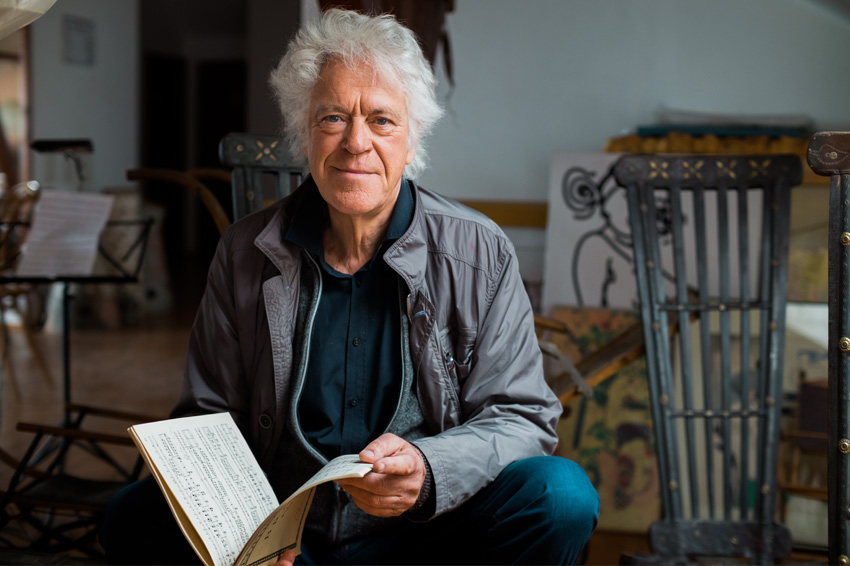Geigenpädagogik

„Es gibt für jedes Problem eine Lösung“
Haltung am Streichinstrument mit Bezug auf Ivan Galamian (Juliard school of music New York) und D.C. Dounis:
- Entfaltung des musikalischen Temperamentes als wichtigster Faktor
- natürliche Beweglichkeit macht den Spieler zum Virtuosen, weil sie mit Leichtigkeit abläuft
- Korrekturen der Beweglichkeit zu Gunsten eines befreiten, technischen und musikalischen Ablaufs.
- Aufbau des natürliches Spielgefühls durch verfeinertes Gespür und differenzierter, natürlicher Steuerung von fließender Beweglichkeit.
- Elastisches/federndes Spielgefühl an Stelle von „zu fest“ oder „zu locker“
- Zunehmende Leichtigkeit und Spielfähigkeit durch Abbau von Blockaden
- Fingerspitzengefühl am Bogen und Erkenntnisse, wie übertrage ich Musikalität auf die Bogenstange.
- Wie fühlt sich mein Körper an, wie reagiert mein Körper, wenn ich Musik auf die Violine übertrage
- Lückenlose Analyse der gesamten Bogenhaltung, Bogenführung und der Bogentechnik
- Erkenntnisse wie ich das Gewicht des Bogens im Zusammenwirken von aktiver Armführung bei gleichzeitig passiver Beweglichkeit der Bogenhand und der Finger ausbalanciere
- Welche Teile des Bogenarmes und der Bogenhand reagieren aktiv oder passiv?
- Was passiert im rechten Arm oder wie fühlt sich der Arm an, wenn ich piano oder forte spiele
- Transparentes Spiel – Bogen über die Saiten „tragen“
- passiver Balancewechsel der rechten Hand und des rechten Armes zwischen Frosch und Spitze
- Kontakt an der Spitze und Freiheit am Frosch
- den Bogen gegen den Widerstand der Bogenhaare zur Saite ziehen
- Wie lerne ich ein Vibrato in verschiedensten Schattierungen und Schwingungen, welche Beziehung hat das zum tonlichen Ausdruck
- die technischen und musikalischen Funktionen des Lagenwechsels.
- was passiert unter dem Finger, was passiert mit dem Daumen während des Lagenwechsels?
- freier Fingerfall und gute Intonation
- horizontale und vertikale Beweglichkeit der Finger der linken Hand und ihre Entwicklung
- ideale Fingerbalance in hohen Lagen für freies Vibrato und gute Intonation
- Wie lerne ich schnelle Reflexe oder schnelle kontrollierte Läufe
- Wie lerne ich spiccato, staccato, ricochet und alle anderen Stricharten
- Wie lerne ich nahtlose gesangliche Bogenwechsel
- Bewusst/unbewusst
- Zuviel Kontrolle schafft Probleme
- Zuviel Bauchgefühl verhindert reflektiertes Hören
- Koordination von linker und rechter Hand
ENGLISH
“There is a solution to every problem”
String instrument posture related to Galamian (Juilliard School of Music New York) and DC Dounis:
- The unfolding of musical temperament as the key factor
- Natural movement grants the player virtuosity, because it flows easily
- Movement corrections to enable a free, technical and musical flow.
- Developing a natural feeling of playing through refined sensitivity and differentiated, natural control of fluid movement.
- Elastic / springy feel instead of “too tight” or “too loose”
- Increasing ease and playability by reducing blockages
- Sensitive bowing and discovering how to transfer musicality to the bow stick.
- How does my body feel and react when I transfer music to the violin?
- Complete analysis of the entire bow posture, bowing and bowing technique
- Discovering how to balance the weight of the bow through active arm movement and simultaneous passive movement of the bow hand and fingers.
- Which parts of the bow arm and bow hand respond actively, which parts respond passively?
- What happens with the right arm, or how does the arm feel when I either play piano or forte?
- Transparent playing – “carrying” the bow across the strings
- Passive balance shift of the right hand and arm between frog and tip
- Contact at the tip and freedom at the frog
- Pulling the bow to the string against the resistance of the bow hair.
- How to learn vibrato in various shades and vibrations, which relationship this has to the tonal expression
- The technical and musical functions of changing positions.
- What happens under the finger, what happens with the thumb while changing position?
- Free fingering and good intonation
- Horizontal and vertical flexibility of the left hand fingers and their development
- Ideal finger balance in high positions for free vibrato and good intonation
- How do I learn quick reflexes or fast controlled sequences
- How do I learn spiccato, staccato, ricochet and all other types of bowing
- How do I learn singing and seamless stroking of the bow
- Conscious / unconscious
- Too much control creates problems
- Too much gut feeling prevents reflective listening
- Left and right hand coordination

